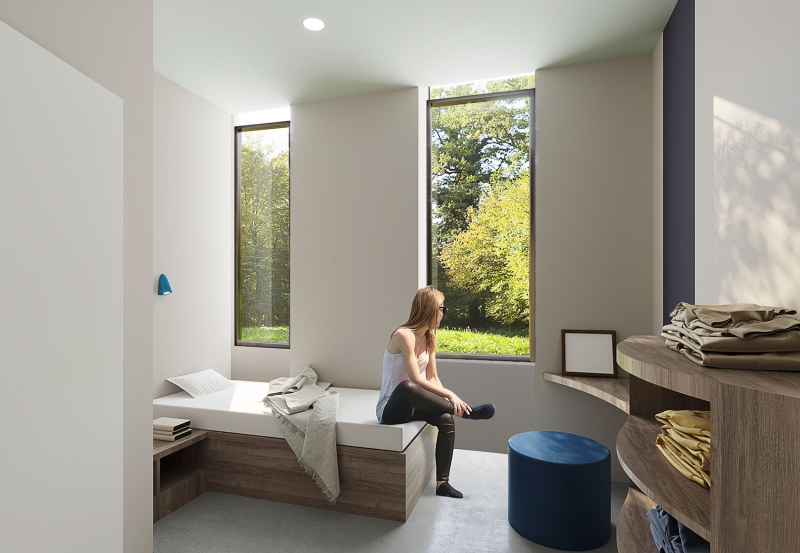
Reducing stigma and supporting mental health recovery is possible through design
COVID-19 drove an unprecedented rise in child sexual exploitation and trafficking due to increased screen time, isolation and heightened risk-taking along with reduced access to authority figures, education and prevention resources. While estimates of affected minors reach 2.4 million, the true count is unavailable due to underreporting. Then, individuals and families caught by abuse and trauma are often re-traumatized by the very systems put in place to serve them.
Research-driven environmental design can remove recovery barriers and better support both survivors and caregivers during the hard work of healing. There are no one-size-fits-all design strategies for recovery facilities for underage victims as each must be informed by therapy models and treatment plans. However, work is underway to develop standards that resist re-traumatization while promoting physical, mental and social health.
Page has been developing a series of best practices based on available research and project experience. We are looking at a broad range of built environments and developing recommendations focused on providing supportive physical environments in which all individuals can thrive.
Trauma-informed design today – and tomorrow
With a better understanding of the residential treatment facility needs for adolescent victims of sex exploitation and trafficking, healthcare designers are identifying trauma-informed environmental design elements to best support recovery. Some can be universally applied, and some will be tailored to each stage of recovery. Design features will vary from project to project and evolve as evidence helps better understand mental recovery processes.
Safe and secure spaces are needed to begin recovery
The first priority is to provide a safe and stable environment that resists re-traumatization. Survivors have basic needs such as sleep regulation, nutrition, exercise, symptom management, and immediate substance abuse treatment if applicable. Caregivers need to be in continuous proximity to catch destructive behavior such as self-harm, eating disorders, and impulsive actions.
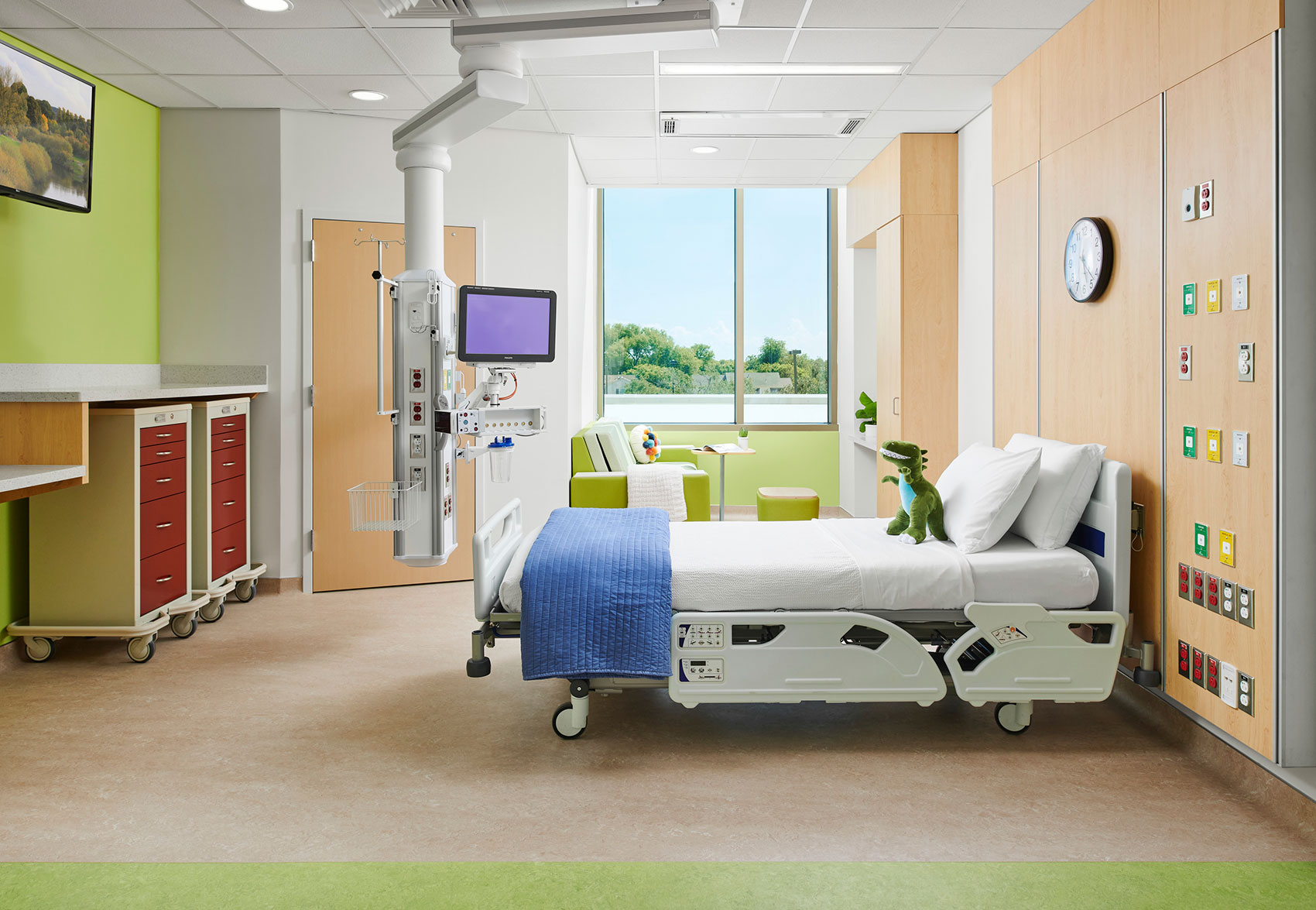
These environments need to eliminate or reduce known adverse stimuli and environmental stressors while providing soothing designs with limited visual complexity. It is also important to understand that individuals experiencing trauma can be hypersensitive to their surroundings.
Calming environments that support remembrance and mourning
When survivors are mentally ready to face their trauma and tell their stories, they need to be supported by calming trauma-informed environments that foster a sense of acceptance and comfort. These include intimate breakout areas for communal healing, quiet reflective spaces and/or therapeutic safe zones where residents are encouraged to discuss difficult topics in an emotionally secure environment.
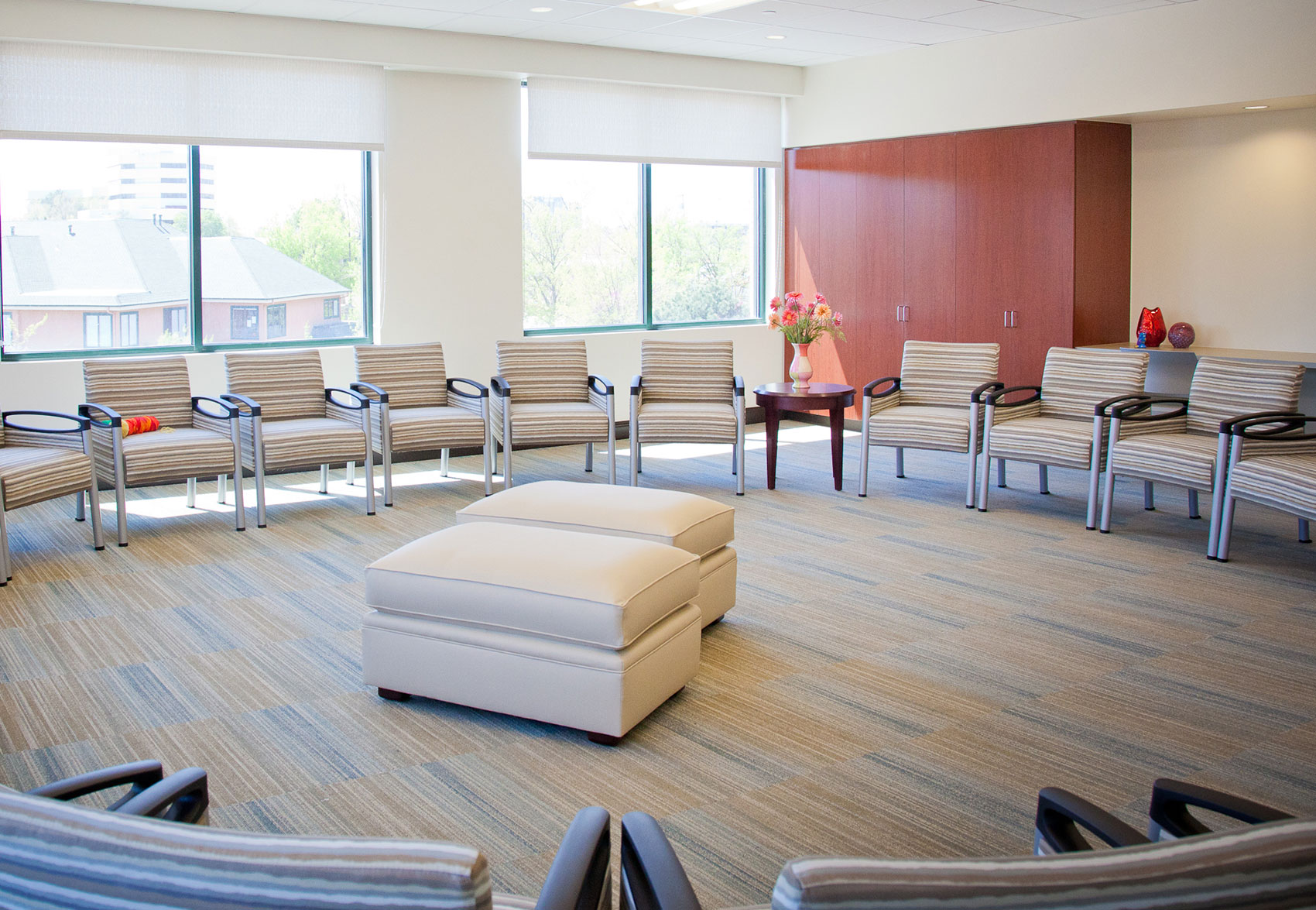
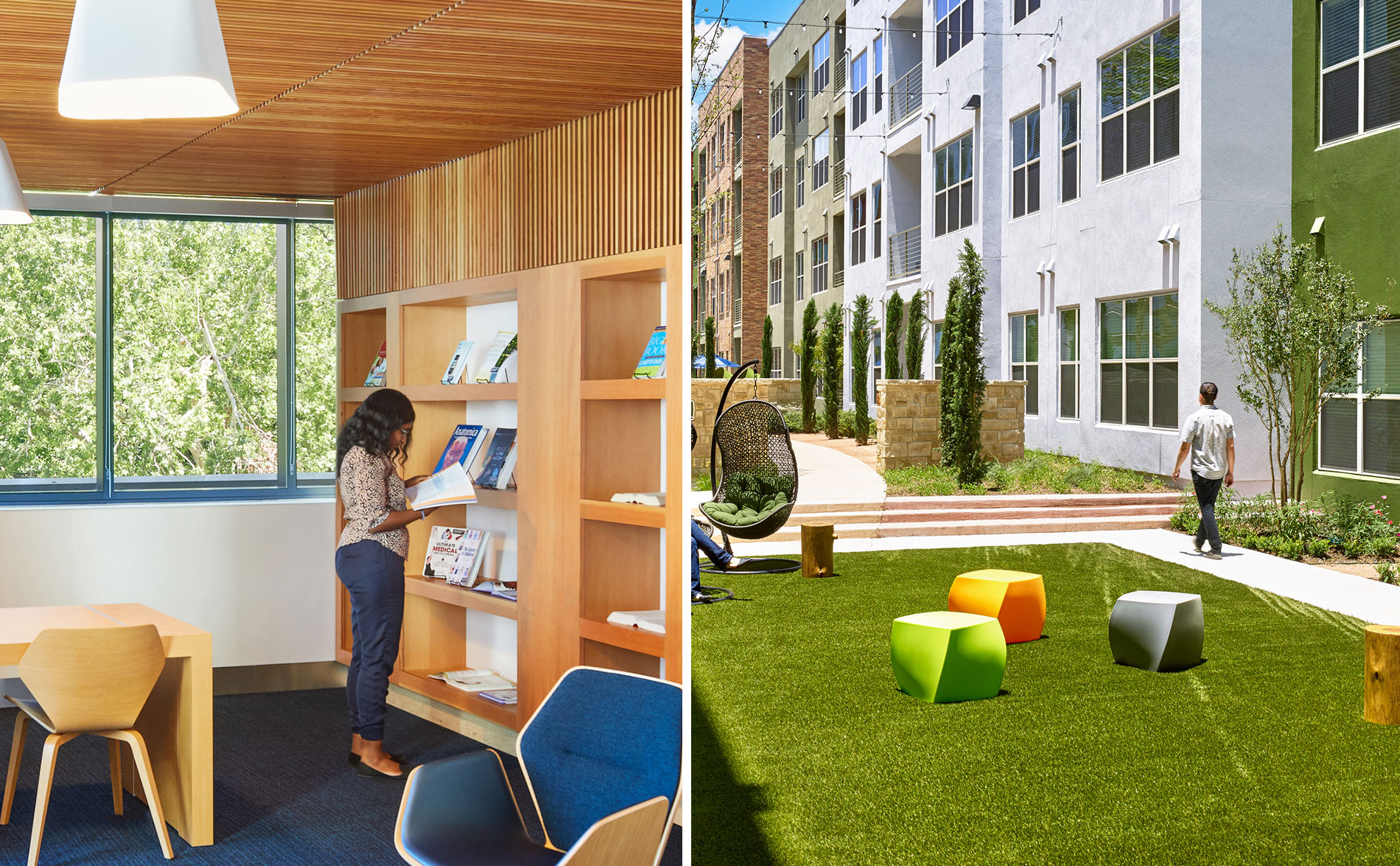
Additional trauma-informed environmental design elements
- Self-expression and Personalization. Individual choice and control are important aspects of recovery. Opportunities for self-expression should mirror the journey through treatment.
- Healing Gardens. At any stage of recovery, these are meant to be self-directed creative spaces where residents have an opportunity to connect to nature and freely express themselves.
- Places Along the Edge. These are areas of semi-private seating along the edges of communal living space that expose residents to social activities without forcing participation.
- Seating for Two. These spaces support intimate one-on-one conversation and opportunities to pair residents in a buddy system.
- Circadian Daylighting. Re-establishing circadian rhythm is an essential part of physical and mental healing of the residents.
- Defensible Beds. These are part of the ongoing effort to establish and enforce survivors’ physical and mental safety. They can be arranged to improve a resident’s perception of security.
- Visible Security Mechanisms. These provide both visual reminders of safety to survivors and can deter attempts to elope during early stages of treatment.
- Color Theory. Color has a large impact on how space is perceived, so hue, saturation, and lightness all need to be considered when designing a space.
- Equity & Inclusion. This may include the use of language and graphics, adequate and equitable access for those with physical or developmental disabilities, and more ways to achieve commonality.
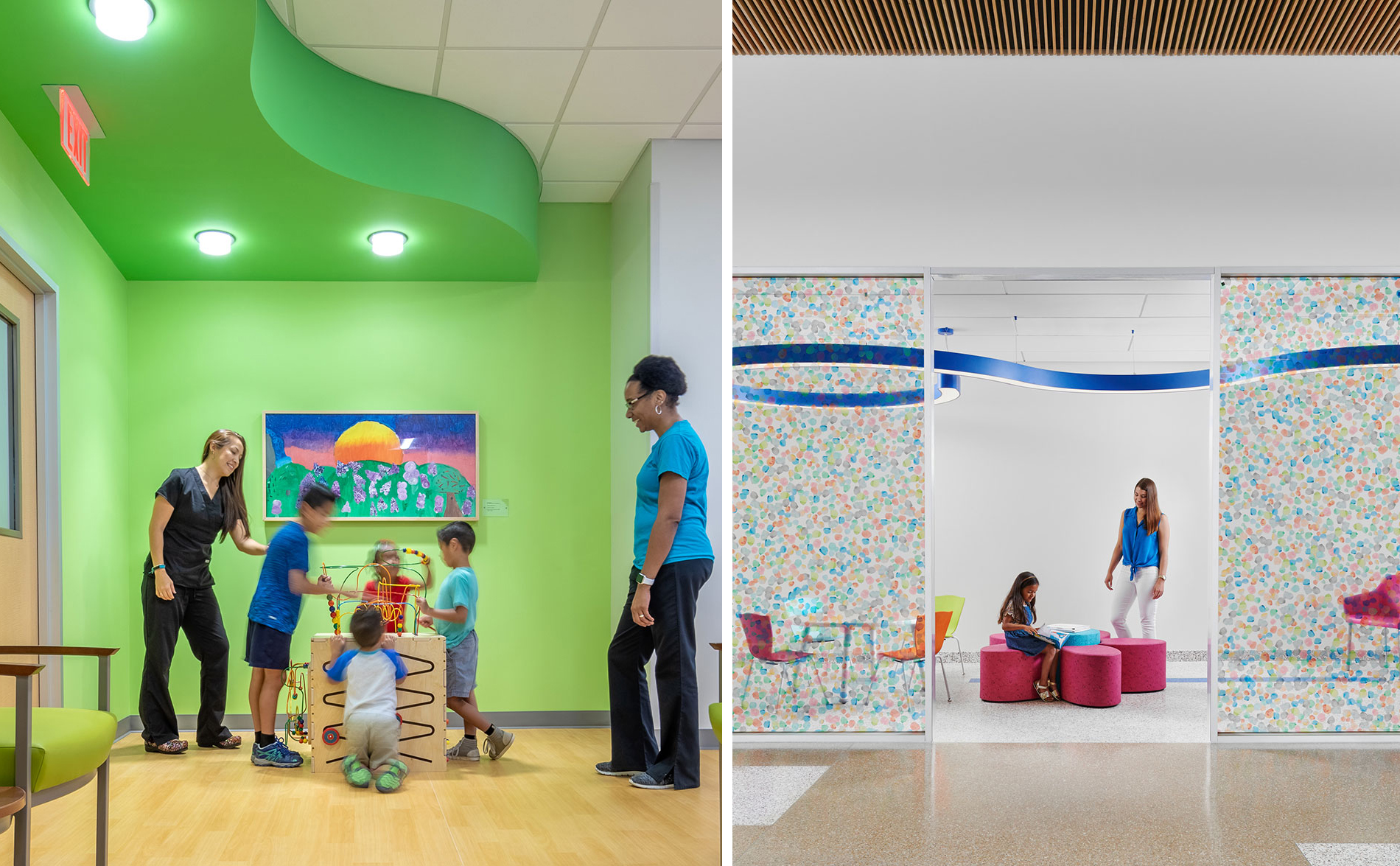
Right: © Peter Molick
Conclusion
Our built surroundings affect us on a physiological, emotional, and social level which can inform identity, worth, dignity and behavior. As such, the impact our physical environment has on our ability to heal, transition towards self-reliance, and reconnect with ourselves and our communities after experiencing trauma cannot be overstated.
It is important for designers to partner with service providers to understand care models, trends and available research in order to develop supportive designs. It is with open ears, minds, and hearts that we embark on designing these types of spaces with the lofty goal of not only removing barriers, but promoting healing and empowering survivors to reclaim their identities and forge new and healthy paths moving forward in the community.
Page white paper available for downloading
The paper Designing Safe & Supportive Spaces for Victims of Sexual Exploitation is one of a series authored by Lisa Ulibarri, Page Planner, and Natale Stephens, Page Healthcare Planner. It goes into greater detail about the above-mentioned design elements as well as other aspects of strategy and research. The paper can be viewed by clicking here.
About Lisa and Natale
Lisa Ulibarri chooses to research and highlight populations that are underrepresented in healthcare design or have very specialized care requirements that may not be intuitive to most designers. They are pursuing EDAC certification to further apply and promote the importance of Evidence-Based Design in healthcare environments.
Natale Stephens, AIA, EDAC, believes the ‘we’ve always done it this way’ trap can be avoided with an emphasis on innovation, research and process-driven designs as well as simulations. She engages in a balanced approach between industry best practices and innovative design that pushes the need for evolution in building technology, care delivery and facility operations.